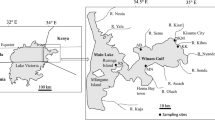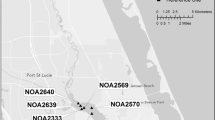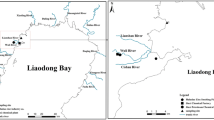Abstract.
The general objective of our work was to propose new reference material for chemical toxicity testing and new sentinel organisms for environmental quality survey programs (freshwater or soils). We also wanted to provide basic toxicological data on the environmental effects of uranium. Thus, we conducted a comparative study to establish the acute toxicity and toxicokinetics of lead (Pb) and uranium (U) to the bivalve mollusc Corbicula fluminea and the terrestrial annelid Eisenia fetida andrei and to compare these findings with those of the well-known teleost fish Brachydanio rerio. We then measured the concentration of these metals in various tissues of the clam and the worm after two periods of exposure (4 and 11 days) to identify the affinities of these tissues for Pb and U. Our results have shown that Pb and U are very toxic to Eisenia and relatively nontoxic to Corbicula. By comparison, Pb was relatively nontoxic and U appeared to be very toxic to the fish. The toxicokinetic studies indicated that the three species are able to accumulate Pb and U, the rate and level of accumulation depending both on the species and the metal. We also found that fish and clams depurate the two metals. Data collected for the worm were conflicting: Pb was not depurated whereas tissue concentrations of U declined after the eighth day of exposure. Our study has also shown that the tissue distribution of Pb in the mollusc and in the earthworm differs significantly from that of U, both after 4 and 11 days exposure. In conclusion, these three species showed potential as bioindicators of environmental contamination by metals. Indeed, they could be used in conjunction to test different compartments of an ecosystem: worms for soils, fish for the water column, and clams for the water/sediment interface.
Similar content being viewed by others
Author information
Authors and Affiliations
Additional information
Received: 30 October 1996/Accepted: 1 September 1998
Rights and permissions
About this article
Cite this article
Labrot, F., Narbonne, J., Ville, P. et al. Acute Toxicity, Toxicokinetics, and Tissue Target of Lead and Uranium in the Clam Corbicula fluminea and the Worm Eisenia fetida: Comparison with the Fish Brachydanio rerio . Arch. Environ. Contam. Toxicol. 36, 167–178 (1999). https://doi.org/10.1007/s002449900457
Issue Date:
DOI: https://doi.org/10.1007/s002449900457




